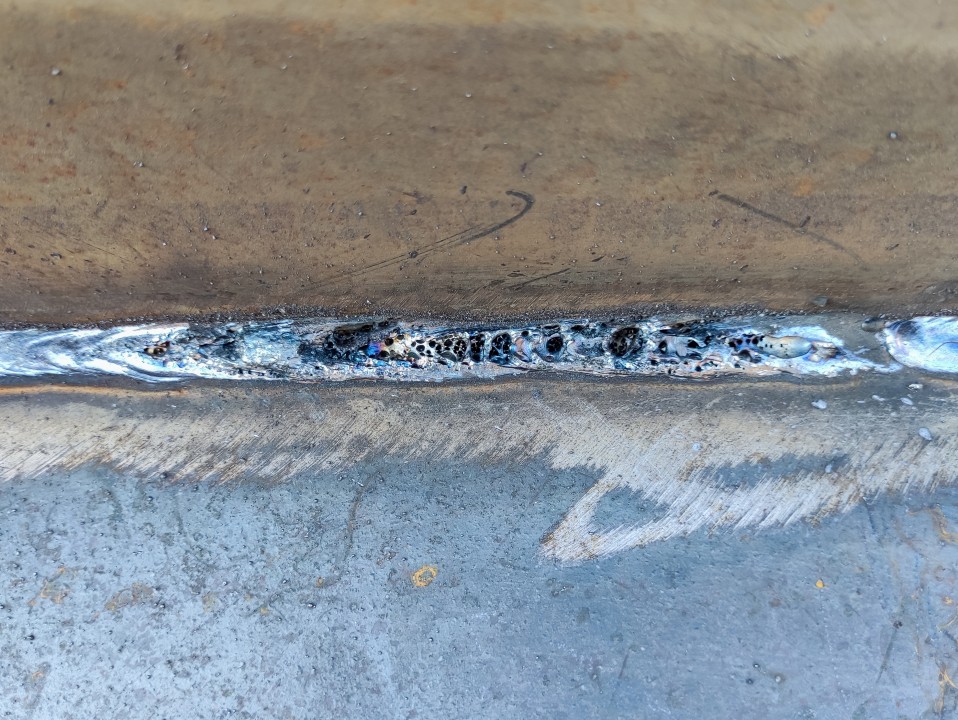What is Porosity in Welding: Essential Tips for Achieving Flawless Welds
What is Porosity in Welding: Essential Tips for Achieving Flawless Welds
Blog Article
Porosity in Welding: Identifying Common Issues and Implementing Ideal Practices for Avoidance
Porosity in welding is a prevalent concern that frequently goes unnoticed up until it causes substantial issues with the stability of welds. This usual issue can endanger the toughness and longevity of welded frameworks, posing safety and security threats and leading to costly rework. By comprehending the root creates of porosity and applying reliable prevention methods, welders can considerably improve the quality and reliability of their welds. In this conversation, we will certainly explore the vital factors adding to porosity formation, analyze its damaging effects on weld efficiency, and talk about the very best techniques that can be embraced to decrease porosity event in welding processes.
Common Reasons For Porosity

Utilizing filthy or wet filler materials can present pollutants into the weld, adding to porosity problems. To reduce these usual causes of porosity, detailed cleansing of base steels, correct protecting gas option, and adherence to optimum welding specifications are crucial techniques in achieving top quality, porosity-free welds.
Impact of Porosity on Weld High Quality

The visibility of porosity in welding can dramatically compromise the structural integrity and mechanical homes of welded joints. Porosity develops voids within the weld metal, deteriorating its general stamina and load-bearing capacity. These gaps work as stress and anxiety concentration points, making the weld a lot more susceptible to splitting and failing under used loads. In addition, porosity can reduce the weld's resistance to corrosion and other environmental elements, even more diminishing its long life and efficiency.
Among the primary effects of porosity is a reduction in the weld's ductility and sturdiness. Welds with high porosity degrees have a tendency to show lower influence stamina and decreased capability to warp plastically prior to fracturing. This can be specifically worrying in applications where the bonded parts undergo dynamic or cyclic loading problems. Porosity can hamper the weld's capacity to properly send pressures, leading to premature weld failing and possible safety dangers in essential structures. What is Porosity.
Ideal Practices for Porosity Avoidance
To enhance the structural stability and high quality of bonded joints, what details actions can be implemented to reduce the incident of porosity during the welding procedure? Porosity avoidance in welding is vital to ensure the honesty and stamina of the final weld. One reliable practice is proper cleaning of the base metal, removing any contaminants such as rust, oil, paint, or moisture that could lead to gas entrapment. Guaranteeing that the welding equipment is in good problem, with tidy consumables and ideal gas circulation rates, can likewise considerably lower porosity. In addition, preserving a steady arc and managing the welding parameters, such as voltage, current, and take a trip rate, assists create a consistent weld swimming pool that decreases the danger of gas entrapment. Utilizing the appropriate welding technique click over here now for the details product being welded, such as adjusting the welding angle and weapon placement, can even more stop porosity. Regular assessment of welds and instant remediation of any concerns determined throughout the welding process are necessary practices to stop porosity and generate top quality welds.
Significance of Proper Welding Techniques
Carrying out appropriate welding strategies is extremely important in making sure the structural honesty and top quality of bonded joints, building upon the foundation of efficient porosity prevention steps. Excessive heat can lead to increased porosity due to the entrapment of gases in the weld swimming pool. Additionally, making use of the appropriate welding criteria, such as voltage, present, and take a trip speed, is crucial for accomplishing sound welds with very little porosity.
Furthermore, the option of welding procedure, whether it be MIG, TIG, or stick welding, must line up with the certain needs of the project to guarantee optimum outcomes. Proper cleaning and preparation of the base metal, in addition to picking the right filler material, are likewise necessary parts of competent welding methods. By sticking to these ideal techniques, welders can minimize the danger of porosity development and produce top quality, company website structurally sound welds.

Checking and Quality Assurance Steps
Evaluating procedures are important to spot and avoid porosity in welding, guaranteeing the strength and resilience of the final item. Non-destructive screening techniques such as ultrasonic testing, radiographic testing, and aesthetic inspection are frequently used to identify prospective problems like porosity.
Performing pre-weld and post-weld evaluations is also directory essential in maintaining quality assurance criteria. Pre-weld assessments involve validating the materials, tools settings, and sanitation of the workplace to avoid contamination. Post-weld examinations, on the other hand, analyze the last weld for any kind of problems, consisting of porosity, and confirm that it meets specified requirements. Executing a thorough high quality control plan that consists of comprehensive screening procedures and inspections is extremely important to decreasing porosity issues and making sure the overall top quality of welded joints.
Conclusion
In final thought, porosity in welding can be a typical concern that influences the quality of welds. By identifying the common sources of porosity and carrying out ideal techniques for prevention, such as proper welding techniques and testing steps, welders can make sure excellent quality and trusted welds. It is important to prioritize prevention techniques to reduce the incident of porosity and preserve the stability of welded structures.
Report this page